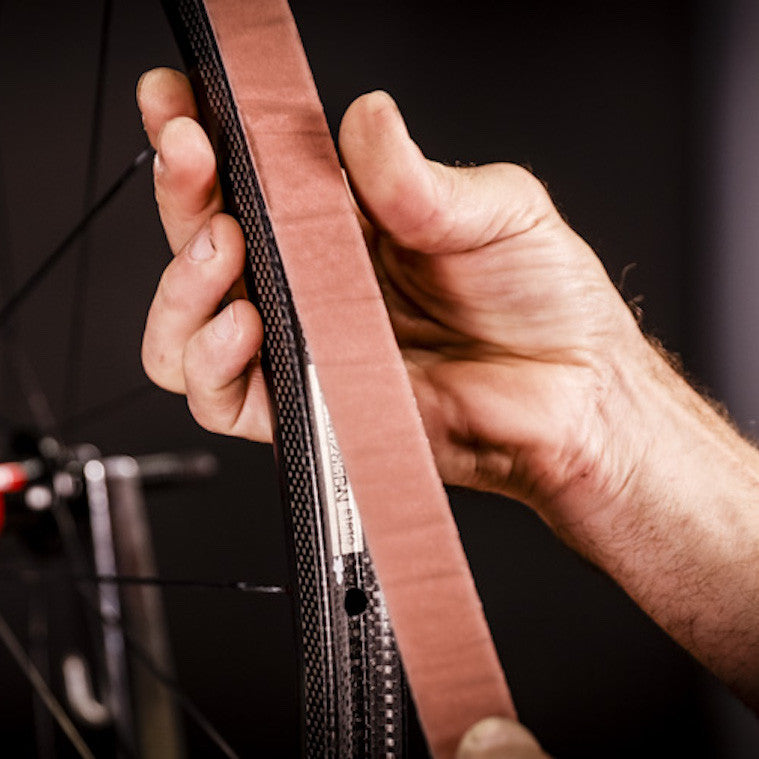Carogna has been tested and is designed to perform flawlessly on any rim material with adhesion using industrial grade acrylic glue. In the event that you need to remove in the future, this part stays with the gluing tape, not the rim. On the tubular tire side, there is a 1mm thick layer of permanently glue (originally designed for underwater applications). It moves and spreads when the tire is first inflated, ensuring optimum contact.
The big question: does it work for cyclocross?
Carogna tape works for cyclocross, we’ve had in general very positive feed-back. Journalists and early adopters like Lennard Zinn of Velonews and Mike Yozell of Bicycling confirm Carogna indeed works for CX. However, not surprisingly, it turns out that knowing the correct gluing procedure is much more important for CX than for normal road use: similarly to mastic, an average gluing job won’t survive cyclocross applications.
Carogna glue is ‘pressure-activated’, so it bonds very strongly when it’s pushed down against the rim by the tubular pressure (for this reason, for road tubulars, we recommend inflating tubulars to their max pressure and allowing some time before riding: adhesion reaches 80% of its maximum strength after 8 hours, the optimal value of 99% after 24 hours).
Important remarks for cyclocross use of Carogna:
- AVOID SANDPAPER ON THE RIM
we know this is common practice when gluing with mastic, but tapes are different. Sandpaper will create small grooves on the rim, reducing the effective bonding surface for the tape. A smooth rim bed offers the maximum surface of contact for Carogna: we recommend removing eventual residual glue completely with Carogna Remover before applying Carogna tape. - CAROGNA WIDTH MUST BE THE CORRECT ONE FOR YOUR RIM
if Carogna tape is much wider than your rims (for example Carogna “M”, 25mm, on a 20mm rim) there is tape on the side that isn’t properly glued to the tubular/rim (just because the rim didn’t extend wide enough and the tape couldn’t be “sandwiched” between tubular and rim). That area is a potential entry point from where dirt and mud could get underneath the glued section of Carogna… not immediately, but within your third or fourth weekend of races. It’s better to trim the eventual excess with a cutter, before mounting the tubular. - DON’T LET YOUR TUBULARS OUT TO FREEZE BEFORE THEY ‘STICK’
as written in the mounting instructions, the ideal thermal range for application of Carogna is between 21°C and 38°C (70 to 100°F), allowing 8 hours to reach 80% of the adhesive strenght . Applying the tape below 10°C is not recommended. If it’s too cold the glue won’t be able to develop permanent bonds, as it’s supposed to do. Once adhesion is set, the use at low temperatures (down to -40°C) is not a problem. - LOWER INFLATING PRESSURE MIGHT REQUIRE LONGER GLUING TIME
as most cx tubulars won’t allow a very high maximum pressure, Carogna might require a longer time before optimal adhesion. This depends very much on the finishing/surface of the tubular base tape.
In most cases, this is not needed, but we’ve been reported cases where cyclocross tubulars were not glued after 8 hours… but were perfectly glued allowing one more day at maximum pressure.




